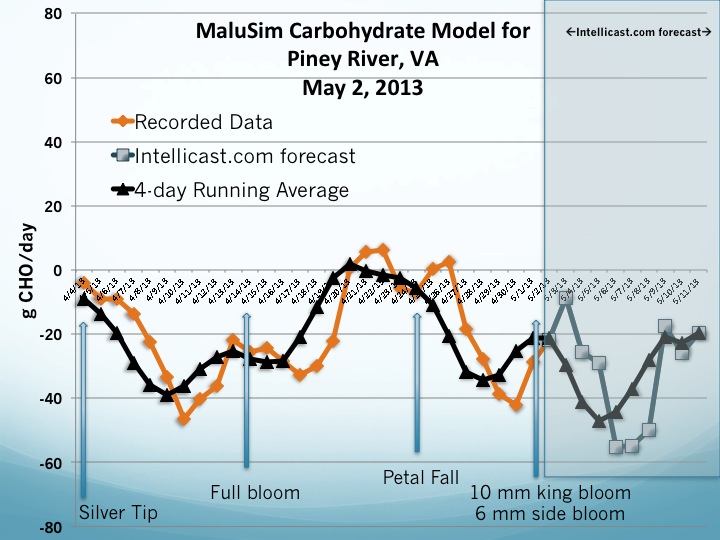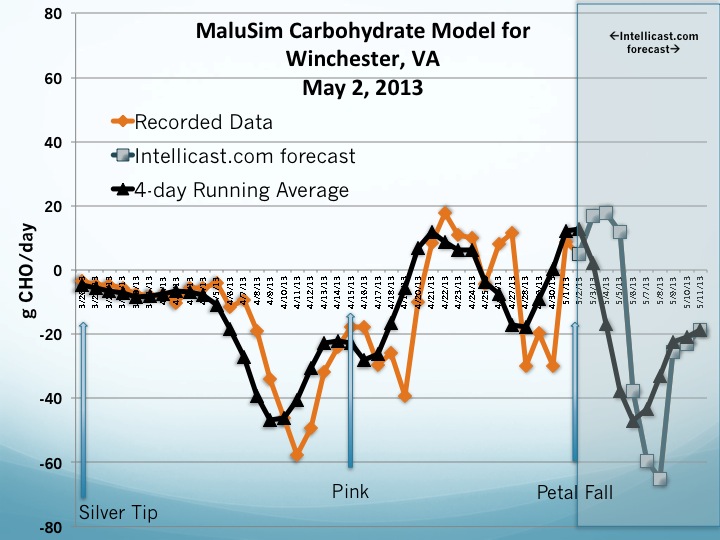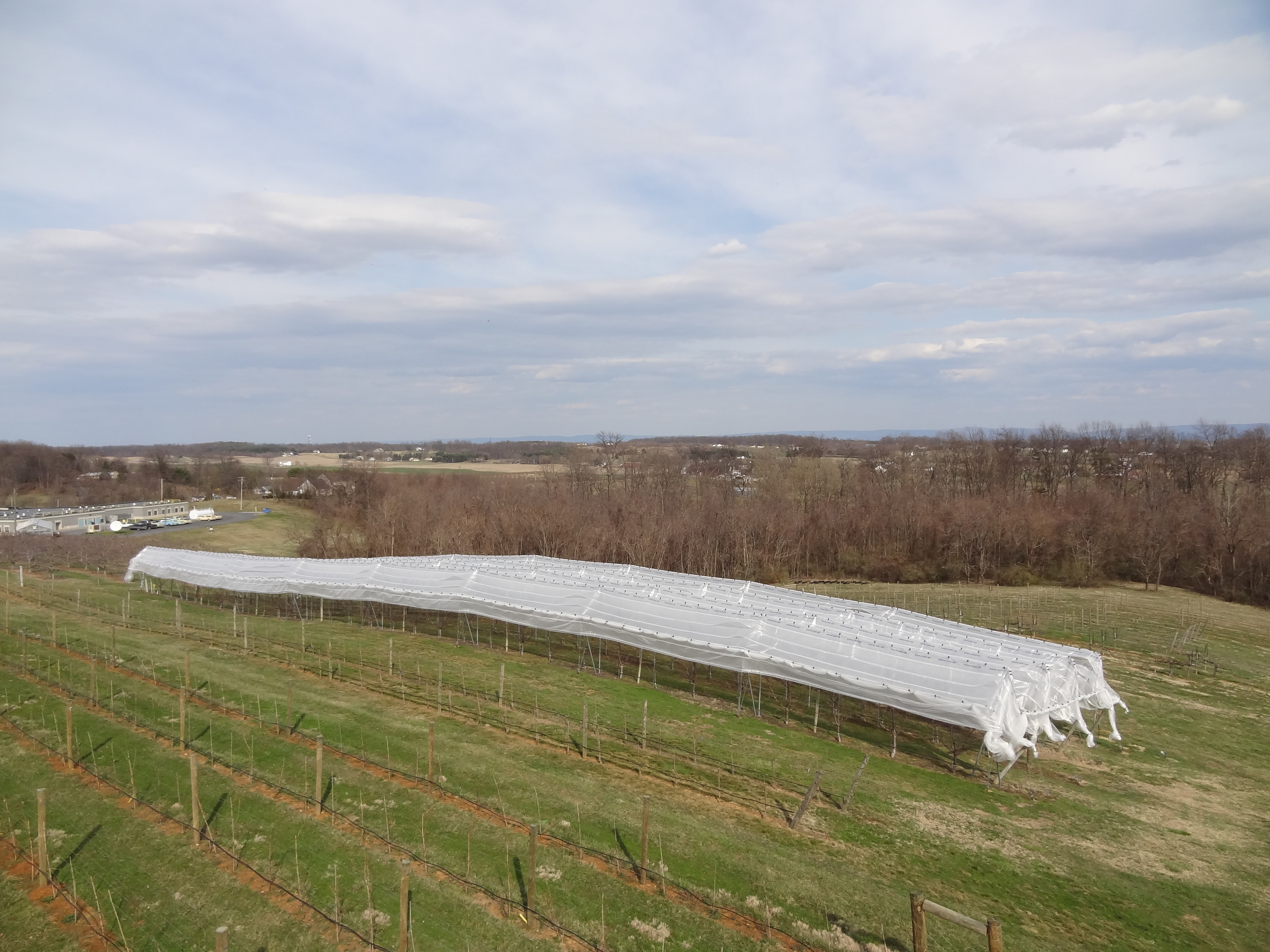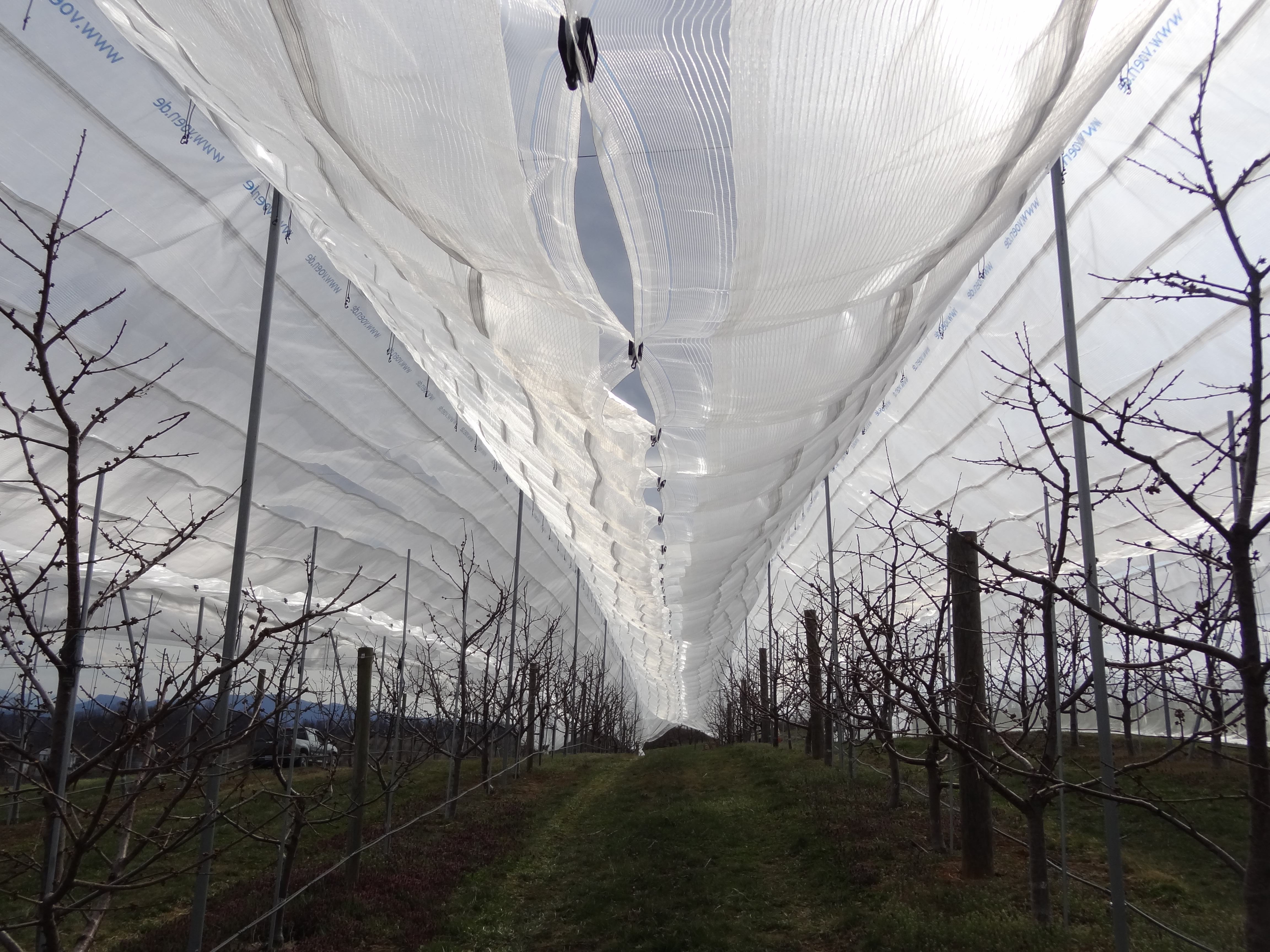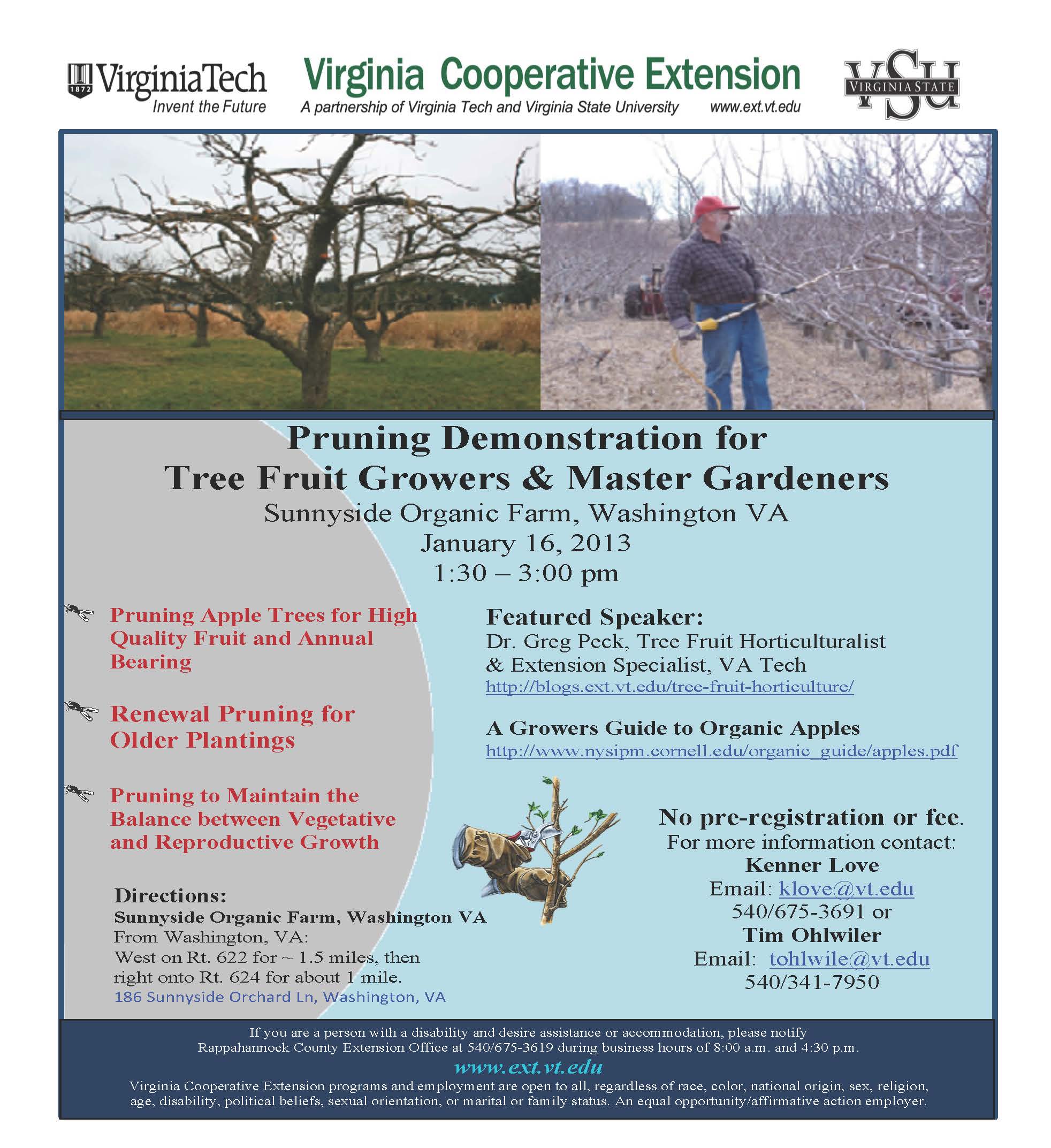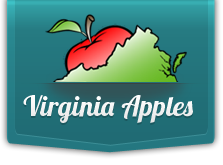Today, I ran the first MaluSim Carbohydrate models for 2013. This includes a simulation for Winchester, and a simulation for Central Virginia (Piney River, VA). Thanks to Bennett Saunders for sending us the data to use for Central Virginia.
The Malusim model was developed by Drs. Alan Lakso and Terence Robinson at Cornell University to estimate the carbohydrate balance in an ‘Empire’ apple tree based upon many years of detailed research and information found in the scientific literature. In recent years, the model has been used by researchers and extension specialists in New York as a tool to help assess the application timing for applying thinning materials at the 10 mm fruitlet size. Carbohydrate status, and therefore the MaluSim model, is not as important for other times when chemical thinners might be applied (i.e., bloom, petal fall, 20 mm), so it is not as clear how well the model does to predict the response of chemical thinners used at timings other than 10 mm.
For the past several years, I have been running trials at the Winchester AREC to see how well the MaluSim model performs under conditions found in Virginia. Many researchers, including myself, are still working towards understanding the best way to use the model. From what we have found, when weather forecasts are used to predict the future carbohydrate status of an apple tree, the MaluSim model can provide a warning as to when there might be a chance for severe under- or over-thinning. This is particularly true when there are three- or four-day trends with large carbohydrate surpluses or deficits predicted. For this reason, in addition to the data points for each day, I show a four-day running average (the black line on the charts). To be consistent with other researchers and extension specialists, the four-day running average is calculated from the date the data is show to three days into the future.
Please keep these caveats in mind if you are using the MaluSim model to guide your thinning application timing:
- We’re still learning how to best use the model. At this point, it is just one more tool in the toolbox. There is no tool that is better than your own experience with chemical thinning on your own farm.
- Future predictions of carbohydrate status are based upon weather forecasts from Intellicast.com for Winchester and Piney River. Temperature forecasts are probably pretty good for 3-5 days, but cloud cover (which is how I calculate the future solar radiation) is much less reliable. Although I show predictions out 10 days, my confidence that they are correct decreases significantly after 5 days. Nonetheless, it is useful information–just remember to keep looking for updated models so that you have the most up-to-date information. I will do my best to post a model for Central Virginia and Winchester twice a week.
- Look at the day that you want to spray, and the 2-3 days after that. If there are periods of severe surplus or deficit, consider adjusting the rates or timing of your thinning applications.
- The model is based upon the phenology of ‘Empire’. This is because the researchers in NY had a large body of data on Empire to use when they created the model. Of particular note, you should be aware that the model “clock” starts at silver tip for Empire. Cultivars with much earlier or later bud break may not correlate as well with the model values.
- The models that I am running use data from the Winchester AREC, and Saunders Brothers Orchards in Piney River, VA. You need to consider whether or not those locations represent the weather in your orchard.
- The model only accounts for temperatures and sunlight. Other weather events, such as rainfall or frosts may cause other impacts on the efficacy of your thinning materials that are not going to be represented in the model.
In the below pdf files, I provide a chart of the weather data that are used to run each model (daily maximum temperature, daily minimum temperature, and daily solar radiation), a chart of the MaluSim model with day-by-day data and a four-day running average, and a chart with the potential response a chemical thinner might have for different levels of carbohydrate balance in the tree.
So, what do today’s models show? Some very advanced blocks of early blooming apple cultivars in Central Virginia are getting close to the 10 mm thinning stage. From applications that occur today and tomorrow, you should expect “normal” to “slightly aggressive” response from your standard thinning rates, but nothing that suggests sever overthinning. However, there is a period of unsettled weather predicted for Mon-Wed of next week that could cause the carbohydrate levels to drop in the trees. It all depends on the amount of cloud cover we get over those days. Temperatures are going to remain moderate over that period, so even with the potential for some cloud cover, it doesn’t look like a severe carbohydrate deficit. Cloud cover is the hardest thing to predict, and predictions are only good for 3 days at best.
In Winchester, we are still at late bloom to petal fall, so there’s probably another week before the carbohydrate model data needs careful interpretation.
I will talk more about the model at tonight’s In-depth fruit school in Winchester.

